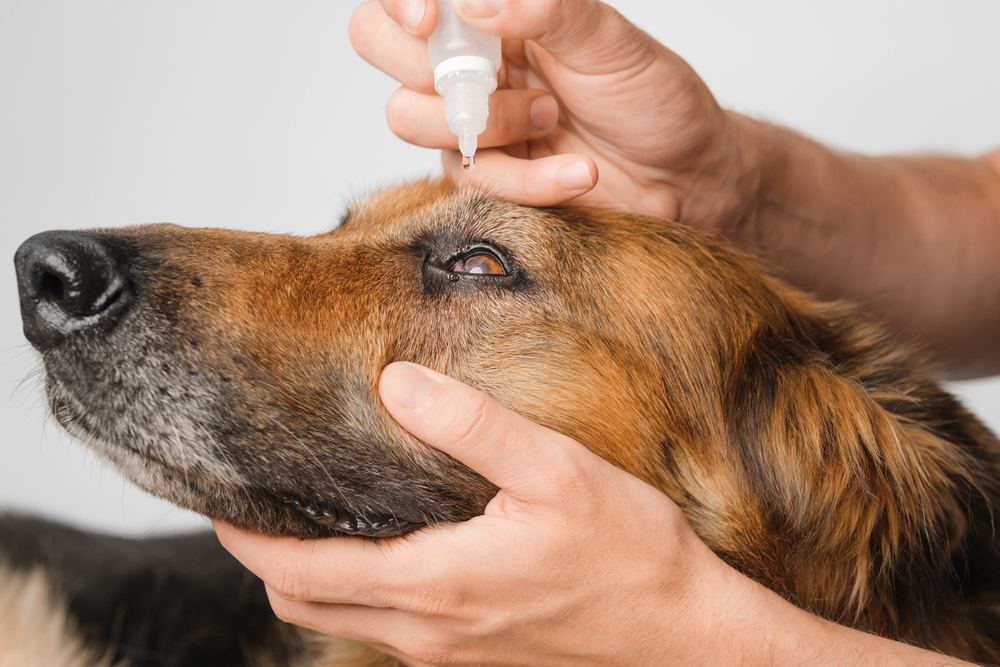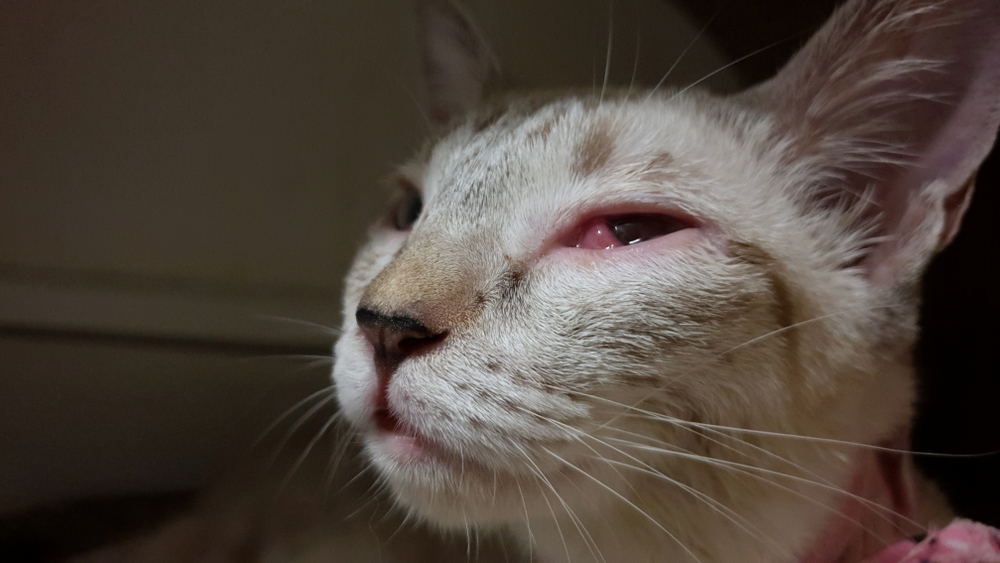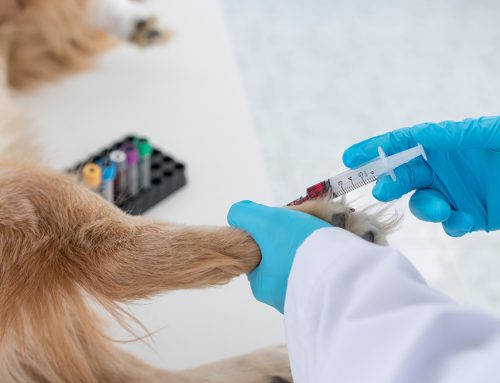When you notice that your pet’s eye is red, it’s natural to be concerned. Just like in humans, red eyes in pets can stem from a range of causes, some of which are minor, while others require immediate attention. At Boca Midtowne Animal Hospital in Boca Raton, FL, we understand how unsettling it can be to see your pet in discomfort, and we are here to help you navigate through these concerns. Recognizing the signs and understanding what might be causing your pet’s red eye can make all the difference in ensuring they get the right care at the right time.
Common Causes of Red Eyes in Pets
Red eyes in pets can develop for several reasons. Here are some of the most common causes:
Allergies:
Just like humans, pets can suffer from allergies that affect their eyes. Common allergens include pollen, mold, dust, and even certain foods. When your pet encounters these allergens, their eyes may become red, itchy, and watery. This discomfort often leads them to rub or paw at their eyes, further irritating the area.
Conjunctivitis (Pink Eye):
Conjunctivitis is an inflammation of the light pink tissue lining the eye, often caused by bacterial or viral infections, allergies, or irritants. You might notice redness, swelling, and sometimes discharge, which can range from clear or white to yellow or green. Pets with conjunctivitis may also squint or blink excessively. This condition is contagious, so it’s important to seek veterinary care promptly to prevent it from spreading, especially in households with multiple pets.
Dry Eye (Keratoconjunctivitis Sicca):
Dry eye occurs when your pet’s eyes don’t produce enough tears, leaving them dry, irritated, and inflamed. The lack of lubrication can cause the eyes to appear red and uncomfortable. If left untreated, dry eye can lead to more severe problems, such as ulcers or infections.
Foreign Objects:
It’s not uncommon for pets, especially those who spend time outdoors, to get particles like sand, dust, or plant matter in their eyes. These foreign objects can cause immediate irritation, leading to redness and discomfort. If your pet is persistently pawing at their eye or seems unusually squinty, it’s worth investigating whether something may be stuck in their eye.
Scratches or Injuries:
Accidents can happen during playtime, especially with curious or energetic pets. Whether it’s a scratch from another pet or a bump into a sharp object, trauma to the eye can lead to redness, swelling, and pain. Injuries to the eye should always be evaluated by a vet, as they can lead to infections or more serious damage if not treated promptly.
Glaucoma:
A more serious condition, glaucoma, occurs when there is increased pressure within the eye. This pressure can damage the optic nerve leading to pain, redness, and eventually, loss of vision if left untreated. Glaucoma is an emergency situation and requires immediate veterinary attention to preserve your pet’s vision and relieve their pain.
Other Conditions:
Redness in the eyes can also be a sign of more serious underlying conditions such as tumors, or breed-specific issues. Breeds with prominent eyes, like Pugs or Bulldogs, are more prone to certain eye issues, and owners should keep a close watch for any abnormal signs.
Recognizing the Signs of a Problem
How can you tell if your pet’s red eye is serious? Here are a few things to look for:
- Persistent Redness: If your pet’s eye remains red for more than a day or two, or if the redness worsens, it’s time to consult your vet.
- Eye Discharge: Discharge from the eye can provide important clues. Clear discharge may indicate an allergy, while yellow or green discharge could suggest an infection.
- Excessive Pawing or Squinting: If your pet is pawing at their eye, blinking a lot, or squinting, they’re likely experiencing discomfort and should be seen right away.
- Swelling or Cloudiness: Swollen or cloudy eyes, along with redness, can indicate a more serious condition like glaucoma or an eye infection.These pets should also be seen right away
- Changes in Shape or Color of the Eye: If the shape of your pet’s eye changes in any way, or the color of one of their eyes changes, they should have an exam right away.
Prevention Tips
Preventing eye problems is always better than treating them. Here are some ways you can help keep your pet’s eyes healthy:
- Regular Veterinary Checkups: Annual or bi-annual vet visits allow for early detection of eye conditions, ensuring they are addressed before they become severe.
- Manage Allergies: If your pet suffers from seasonal allergies, talk to your vet about the best way to manage them to avoid flare-ups.
- Eye Care Routine: Gently clean your pet’s eyes regularly, especially if they have long fur around the face, to prevent debris buildup or irritation. Do not use human eye drops unless we tell you they are safe.
- Create a Safe Environment: Reducing allergens in the home with regular cleaning and using air purifiers can help minimize irritants that could affect your pet’s eyes. After outdoor excursions, check your pet’s eyes to make sure they look normal.
Treatment Options

Depending on the cause of your pet’s red eye, treatment will vary:
- Medications: Eye drops or ointments containing antibiotics, antivirals, or anti-inflammatory agents may be prescribed.
- Surgery: For more severe conditions such as glaucoma or injuries, surgical intervention may be necessary.
- Supportive Care: Warm compresses and artificial tears may be recommended to provide relief for certain conditions like dry eye.
When to Seek Immediate Veterinary Care
Some eye conditions require urgent attention. Contact your veterinarian immediately if you notice:
- Sudden onset of redness or swelling.
- Severe pain or discomfort.
- Vision changes or signs of blindness.
- Red, white, yellow or green discharge.
- Protrusion of the eye.
You can quickly schedule an appointment with us using our app, available for download here.
Conclusion
A red eye in your pet can be a sign of various underlying issues, ranging from minor irritations to more serious health concerns. Early intervention is crucial to ensure that your pet remains comfortable and avoids long-term complications. If you notice any signs of eye discomfort in your pet, don’t hesitate to contact us.








Leave A Comment